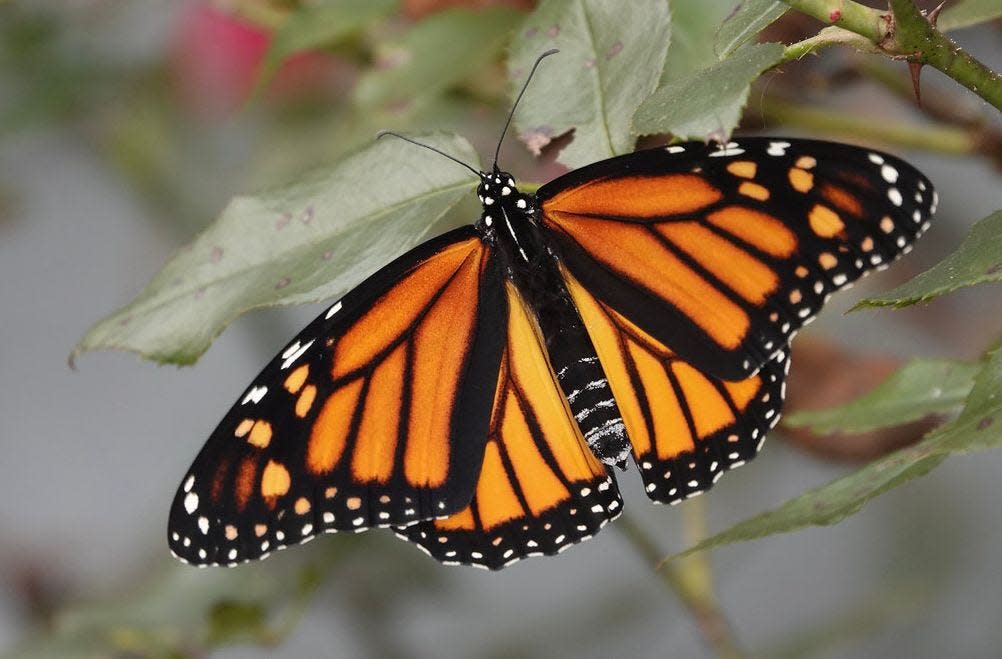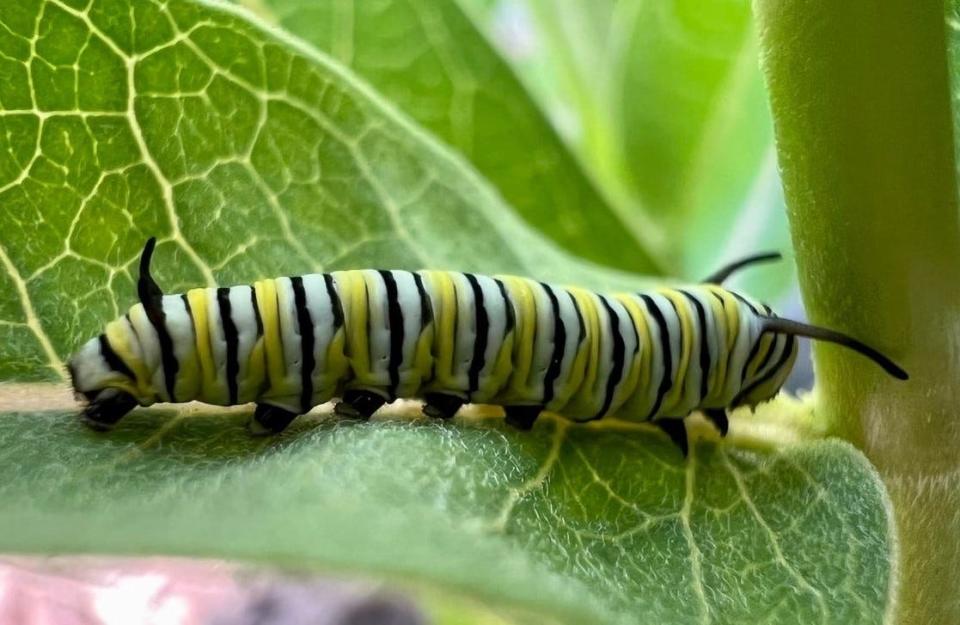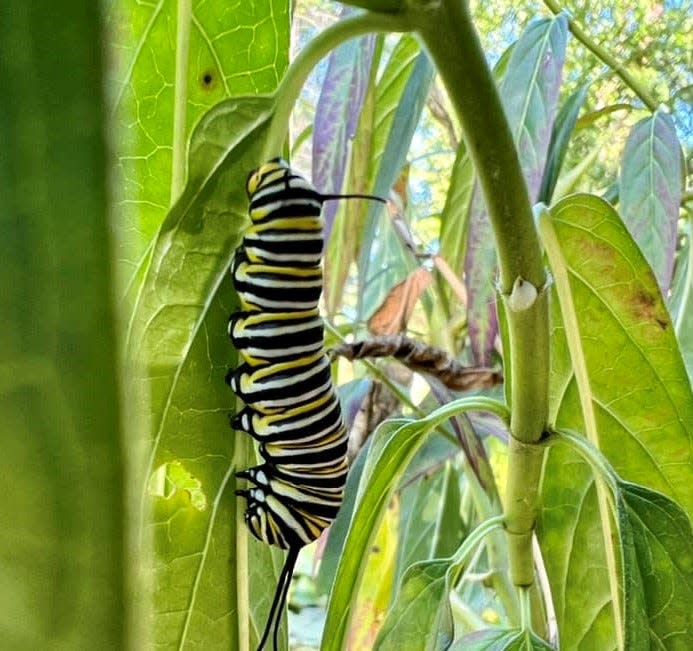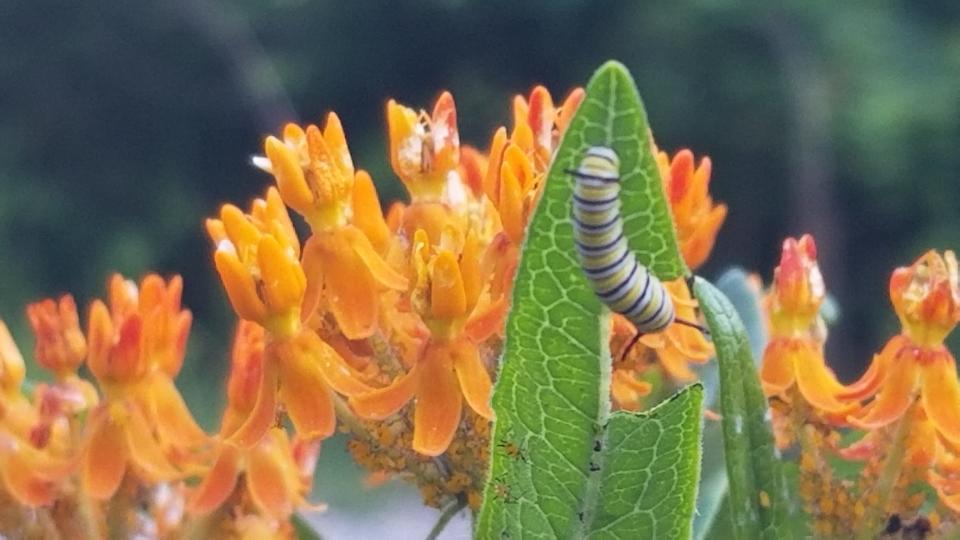Does the shading make a difference? UGA researches use web photos in butterfly research

A University of Georgia study recently determined that there are no basic differences in Monarch butterflies that live in eastern North America and their counterparts in the west.
The opinion emerged from a study staged to determine if the lighter color of the western butterfly caterpillar was due to a greater exposure of sunlight.
Native gardening: Planting seeds for the future: Athens gardeners turn to native plants to support pollinators
New bloodsucker: A new kind of tick has made its way to north Georgia. Here's what you need to know

Distance doesn't matter
The two butterfly populations – separated by the Rocky Mountains – are basically the same butterfly, according to UGA ecology research scientist Andy Davis.
A study 17 years ago in Davis’ lab indicated the monarch caterpillars in California appear lighter in color than those populating the east. It was thought that this occurred due to the higher exposure to sunlight to the caterpillars in the west.
That study, Davis said, was done with caterpillars raised in the lab, but this new study was done using photos of caterpillars taken in nature and available on internet websites.
The new research, according to Davis, show the western and eastern butterfly are basically the same.
The study was published in the latest issue of the Journal of Thermal Biology, a science publication that publishes articles on the influence of temperature on humans and animals.

Endangered butterflies?: Are monarch butterflies endangered? Georgia researchers debate need for designation
'A long running discussion'
Entomologist have long discussed the question of whether the western monarch is a different population than those in the east, according to Davis.
“This is a long running discussion that people have had in the world of butterflies,” Davis said.
“For the longest time people thought they were completely separate,” he said. The eastern monarchs migrate to Mexico for the winter, while the western monarchs migrate to places in California.
The monarch caterpillar has a distinctive appearance and is generally known to the average person. The body is striped with bands of yellow, white and black.

Seventeen years ago, the study done in Davis’ lab at UGA discovered that the monarch caterpillars in California appeared to be lighter in color than those in the east.
This recent study was done by Davis, Nate Nibbelink, a research professor in the Warnell School of Forestry, and ecology undergraduate student Christian J. Deneka.
The new study, according to Davis, was based on photographs taken of monarch caterpillars in the wild.
Photo-sharing helping science
“Now with the rise of the internet and the online sharing photo-sharing platforms, like iNaturalist, there are hundreds of thousands of pictures of butterfly caterpillars,” he said.
The study was a student project by Deneka.
“I said to him, 'Here are all these pictures. Look back at the study we did 17 years ago and try to replicate the findings using these iNaturalist photos,'” Davis said.

“Christian downloaded 500 pictures, some measurements of those pictures, and we were surprised to find that all the pictures he looked at from the western portion of the country were basically identical to the ones from the east,” Davis said.
Other studies have found that the western and eastern monarchs are genetically the same, Davis said.
“Now we think there is no real western monarch. It’s really just an off shoot of the eastern monarch,” he said. The two populations migrate to different places in the winter, but Davis said they are actually “one giant North American population.”
Saving the bees: Saving the bees: New vaccine under development at UGA might help save some honeybees
Davis described Deneka as a talented student.
“This project in particular caught my eye because monarchs are a heavily studied species and I was excited to be able to contribute to that body of work,” said Deneka, who hails from Canton, Georgia, and graduated Etowah High School.
Davis said professor Nibbelink added important skills to the study.
“He did something cool with the study. He was able to figure how to generate data on the temperatures on the places where the photo was taken by knowing the latitude and longitude and the date of the photo,” Davis said.
Nebbelink was able to determine the temperature that day of the photo. The study did show that in places where the temperature was lower, the monarch did have more noticeable black bands on their skin, Davis said.
“That allows the monarch to occupy a huge range in North America. There are monarchs in almost every state in the country and most provinces in Canada. There is no other butterfly that can make the same claim,” the scientist said.
This article originally appeared on Athens Banner-Herald: UGA scientists use internet photos to research Monarch butterflies

